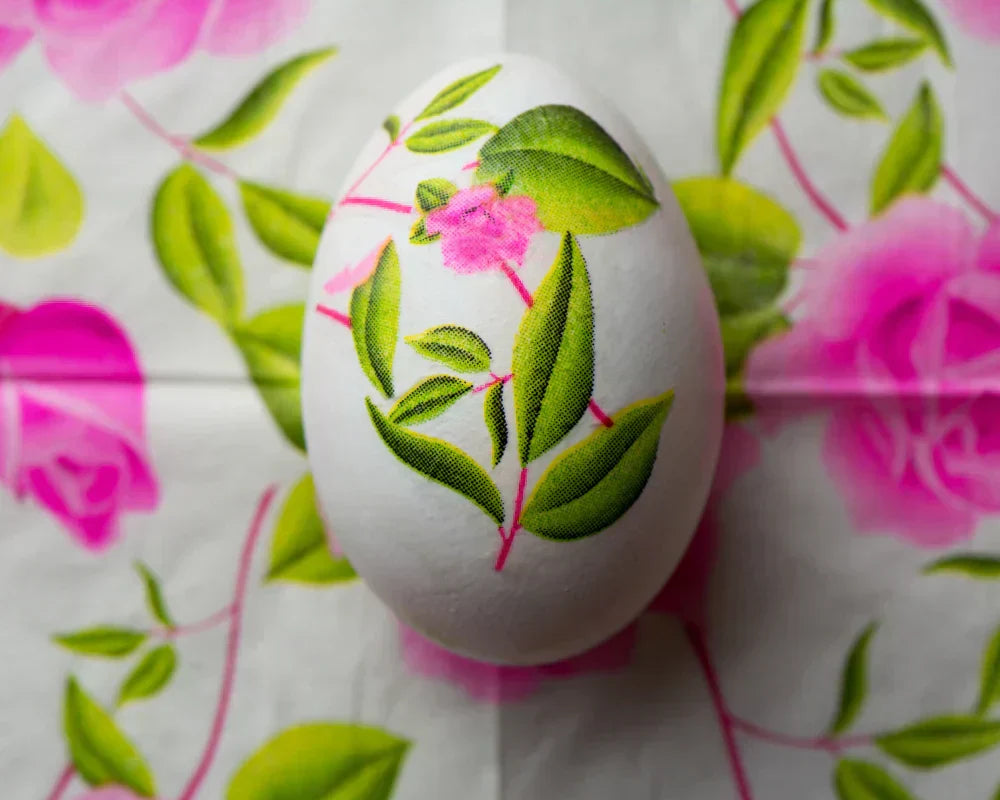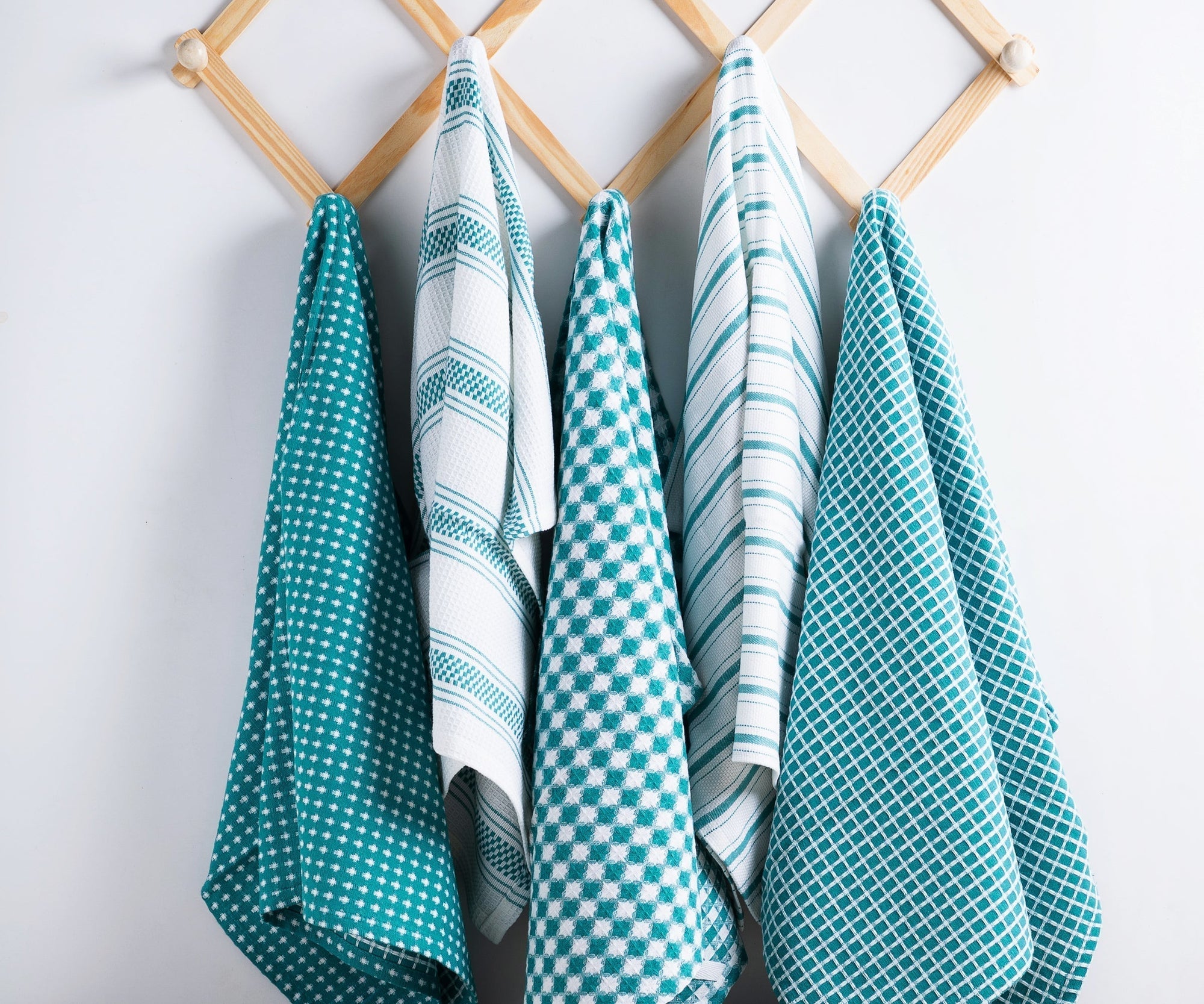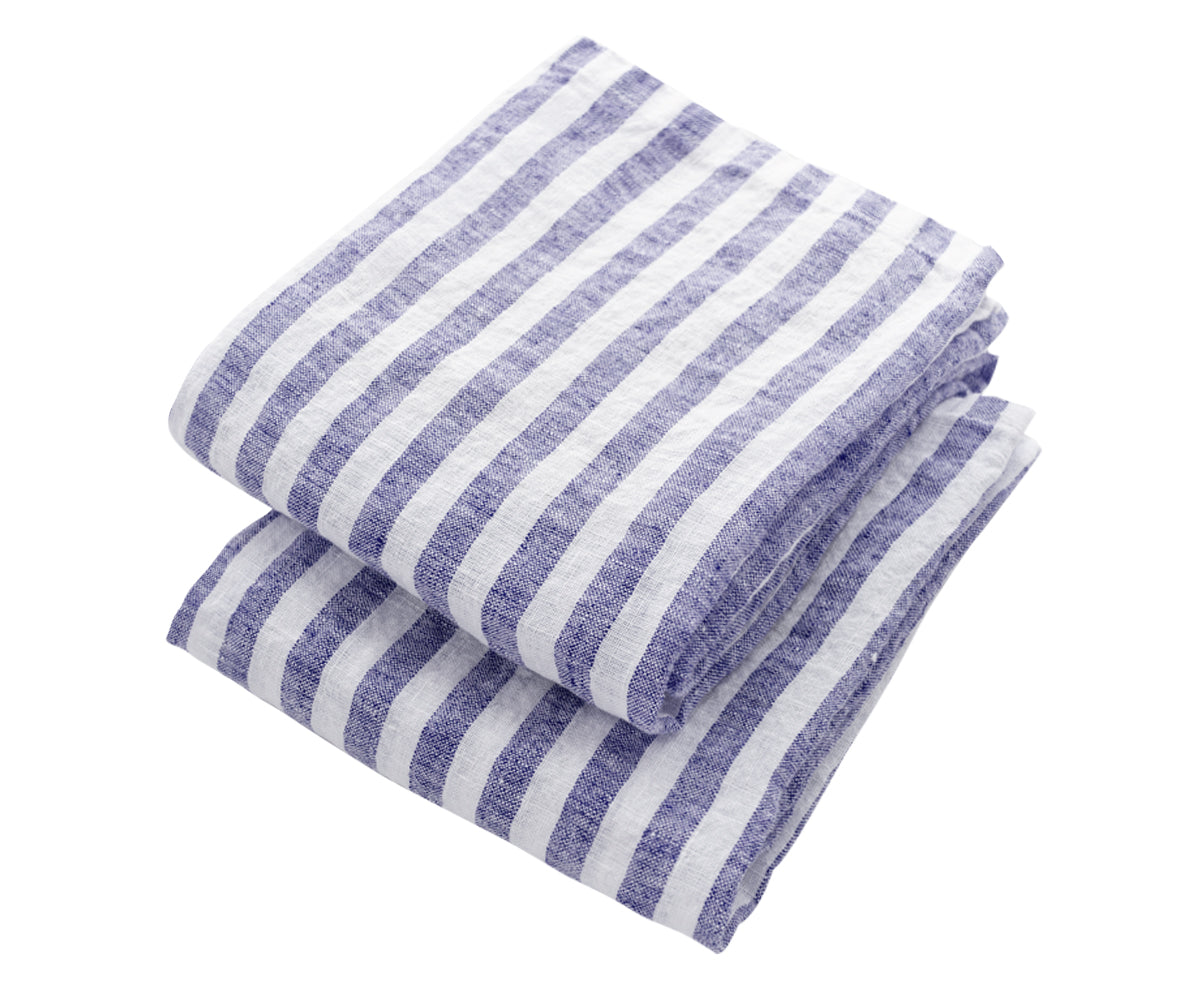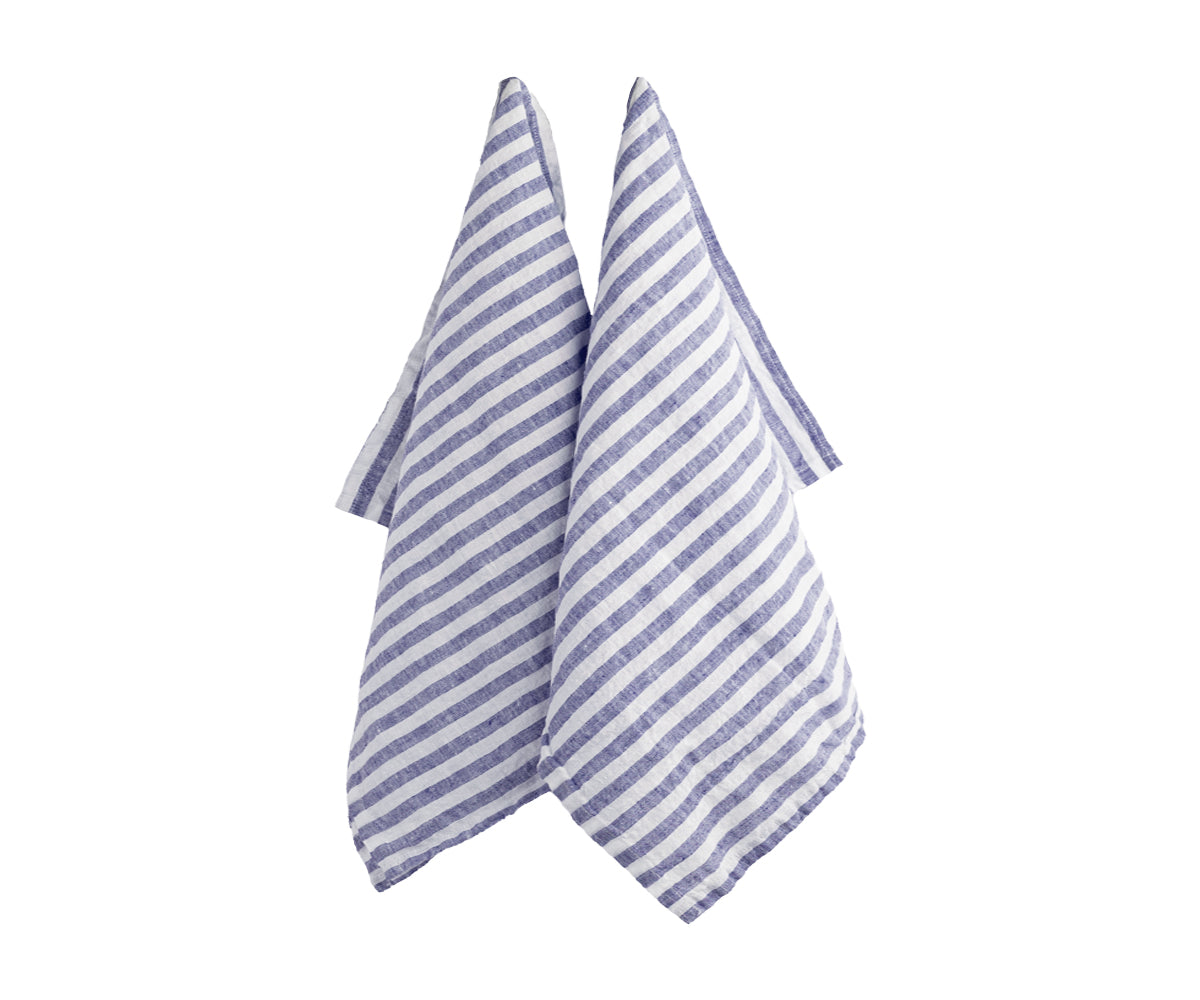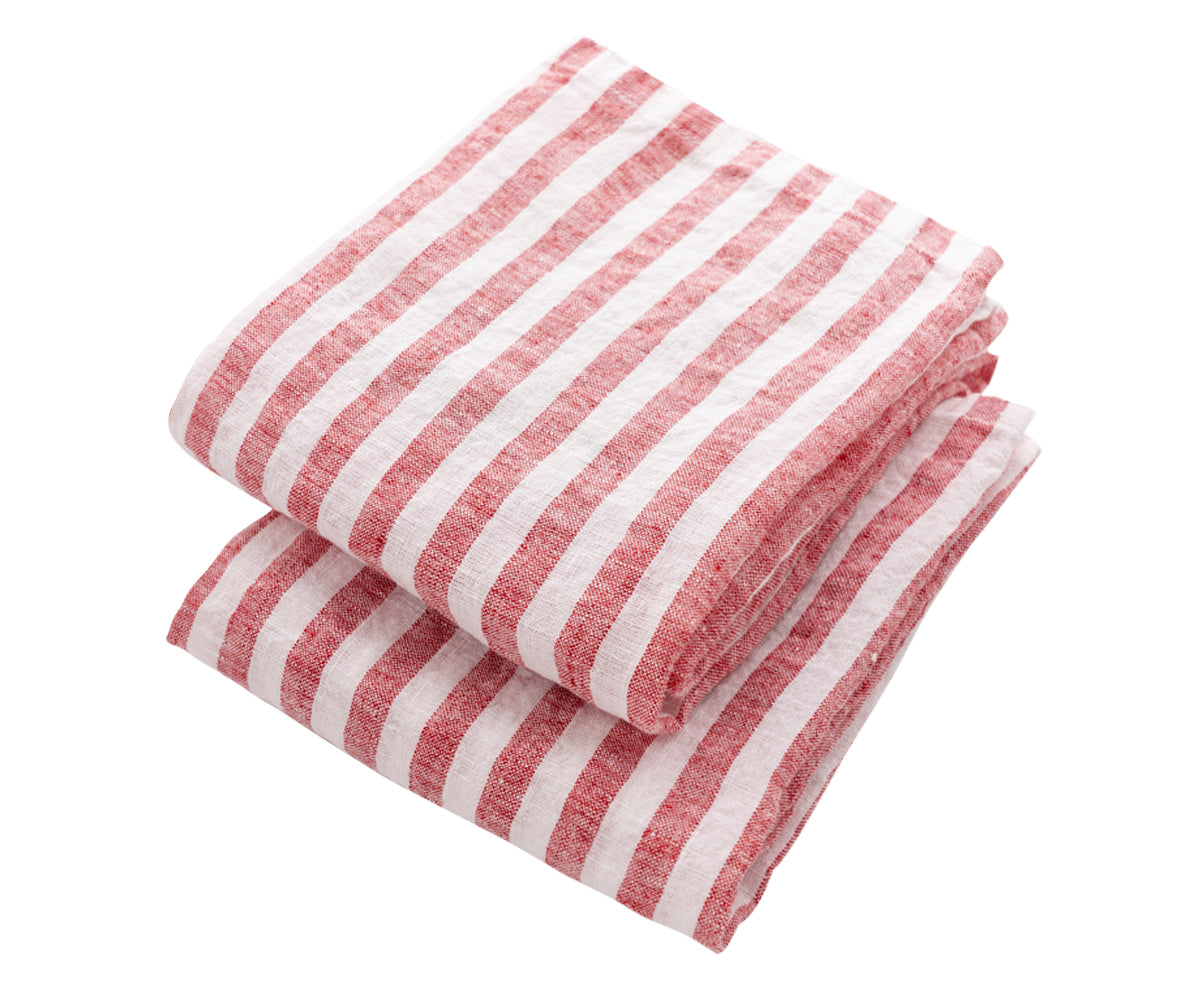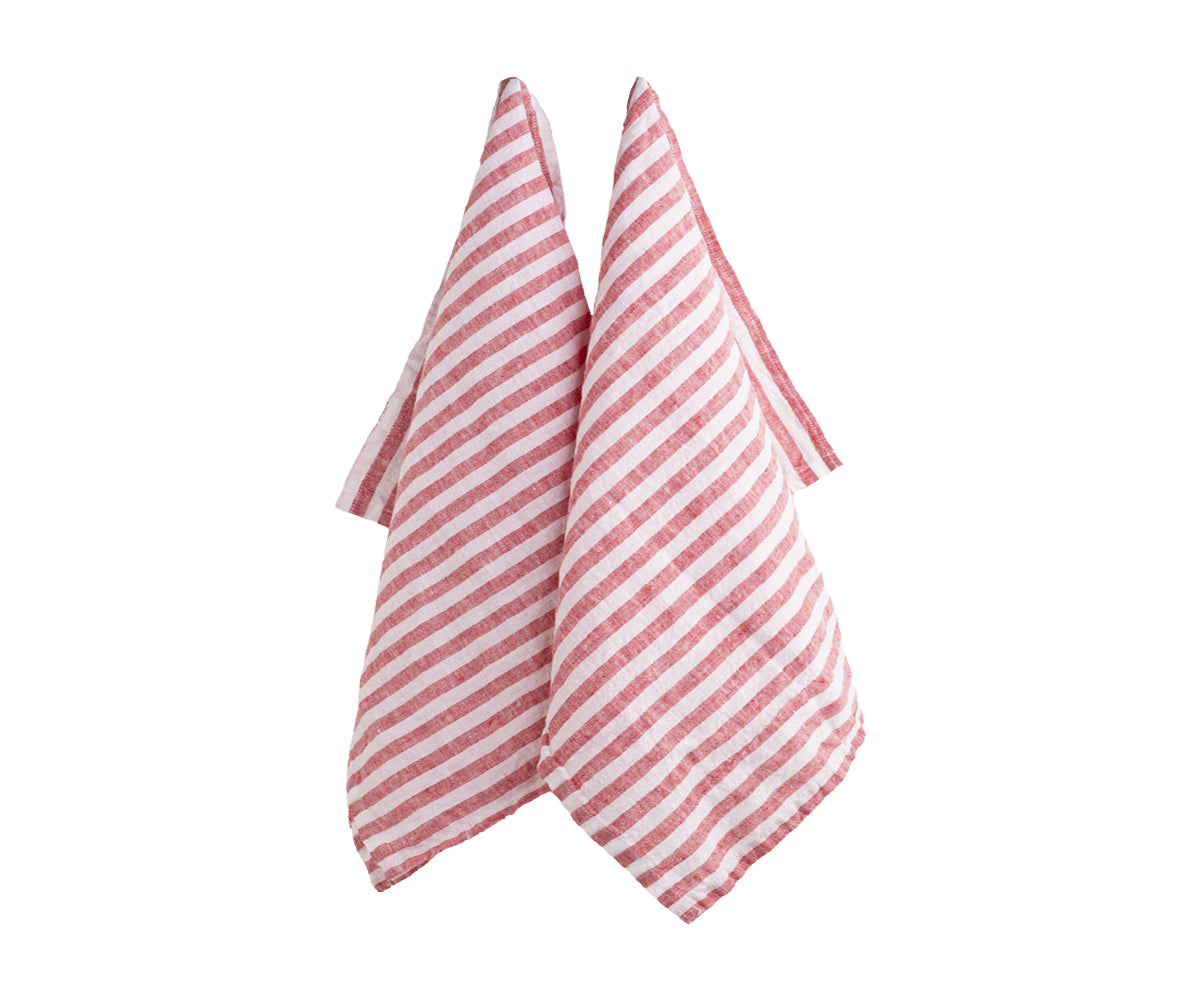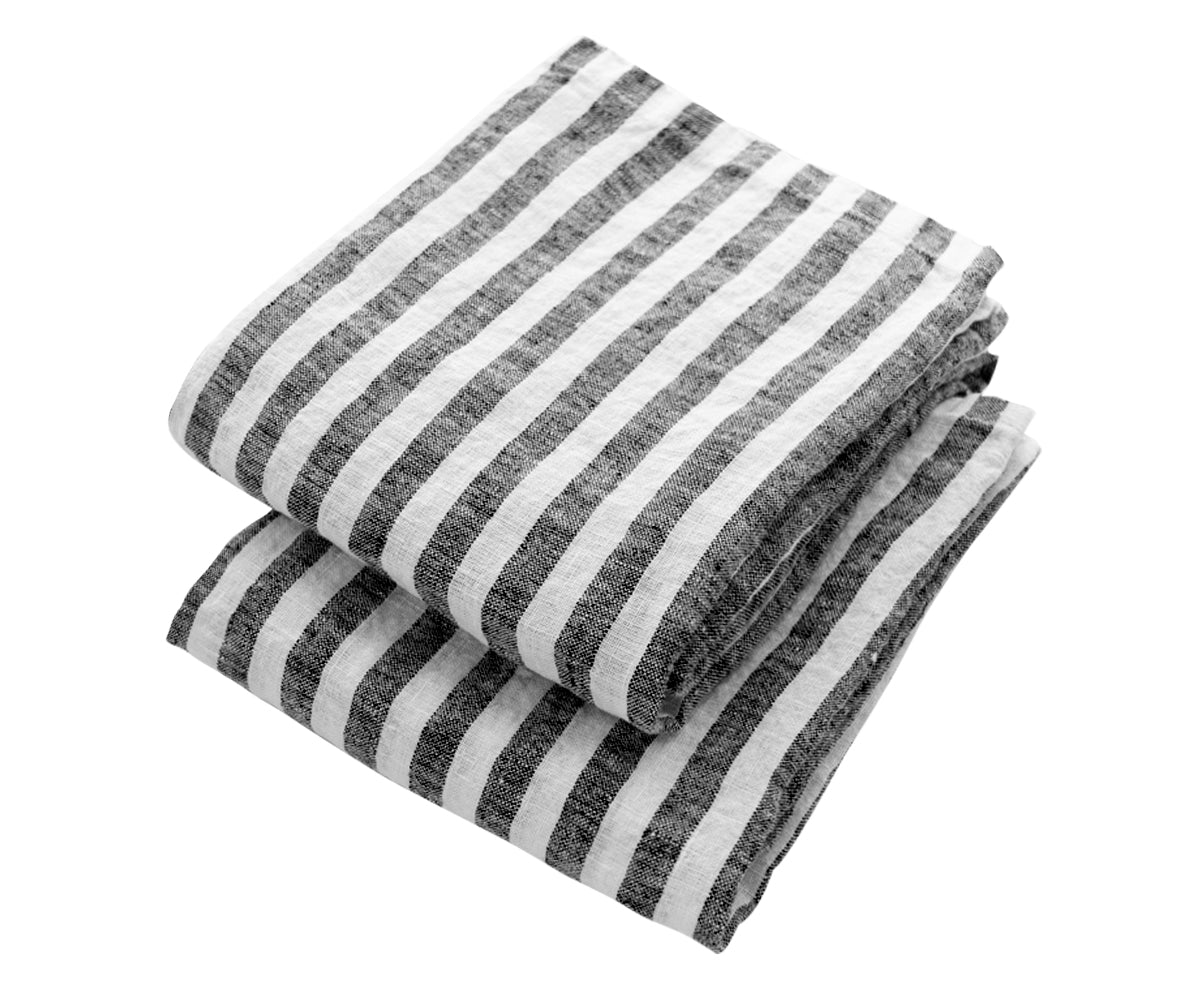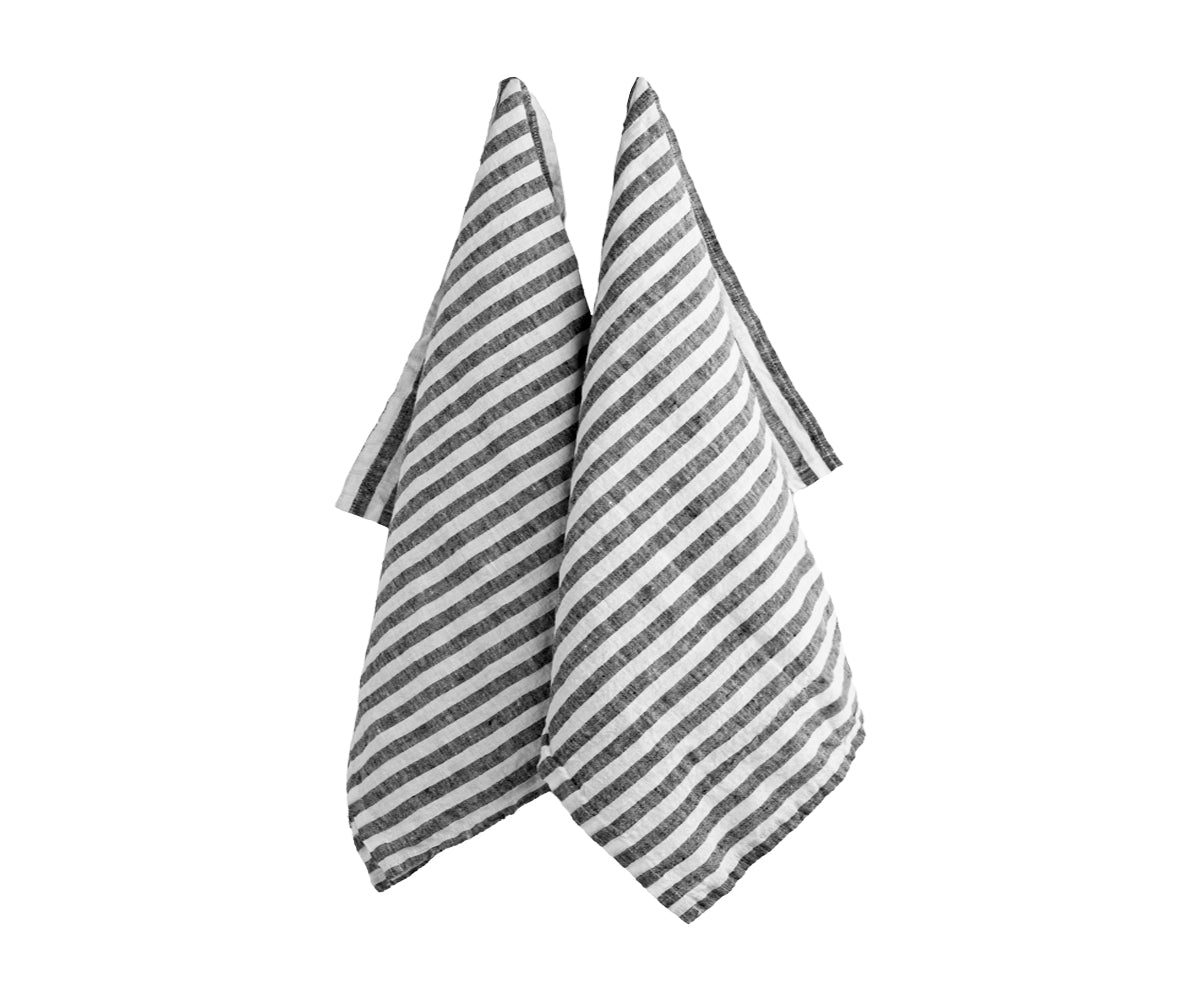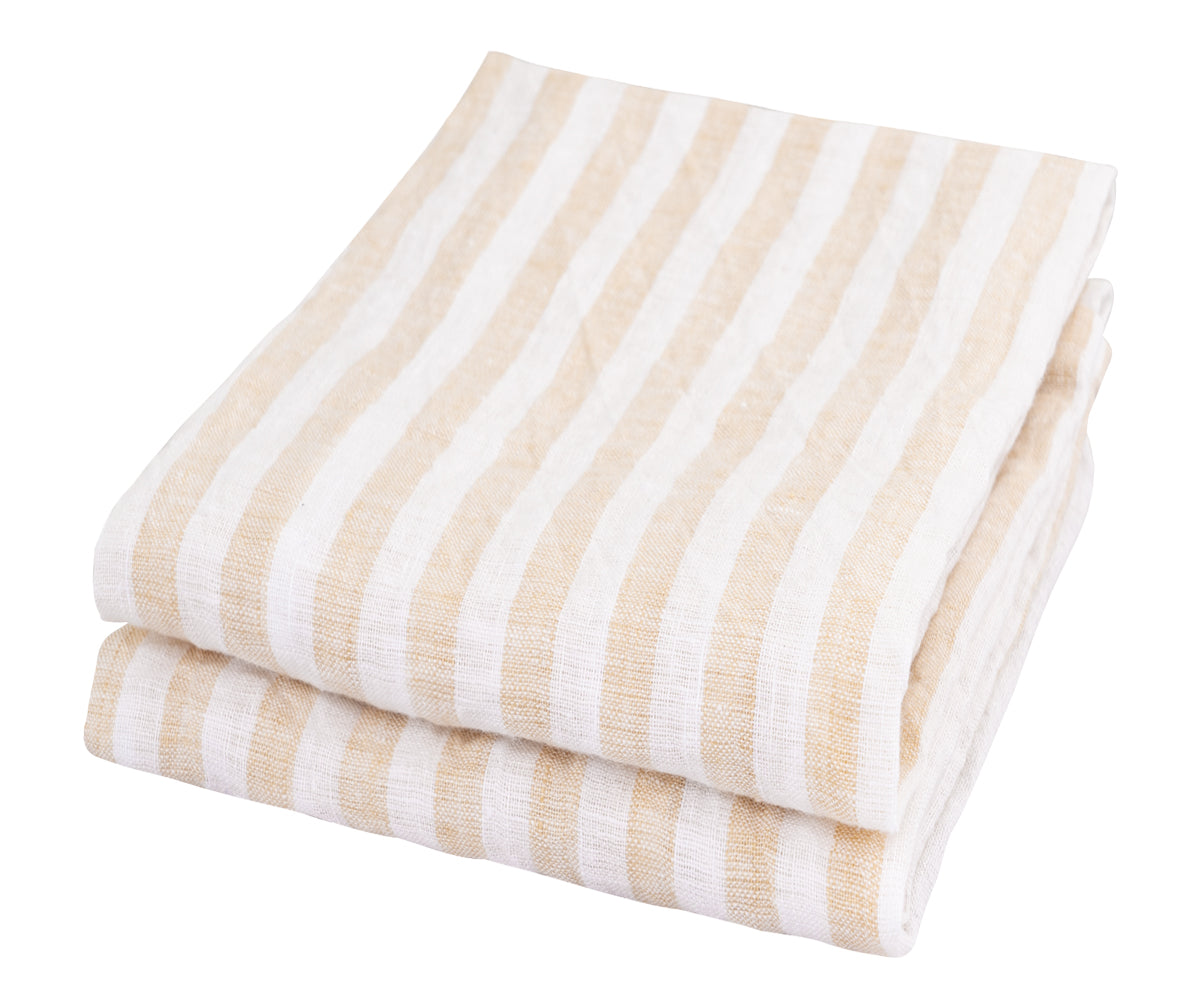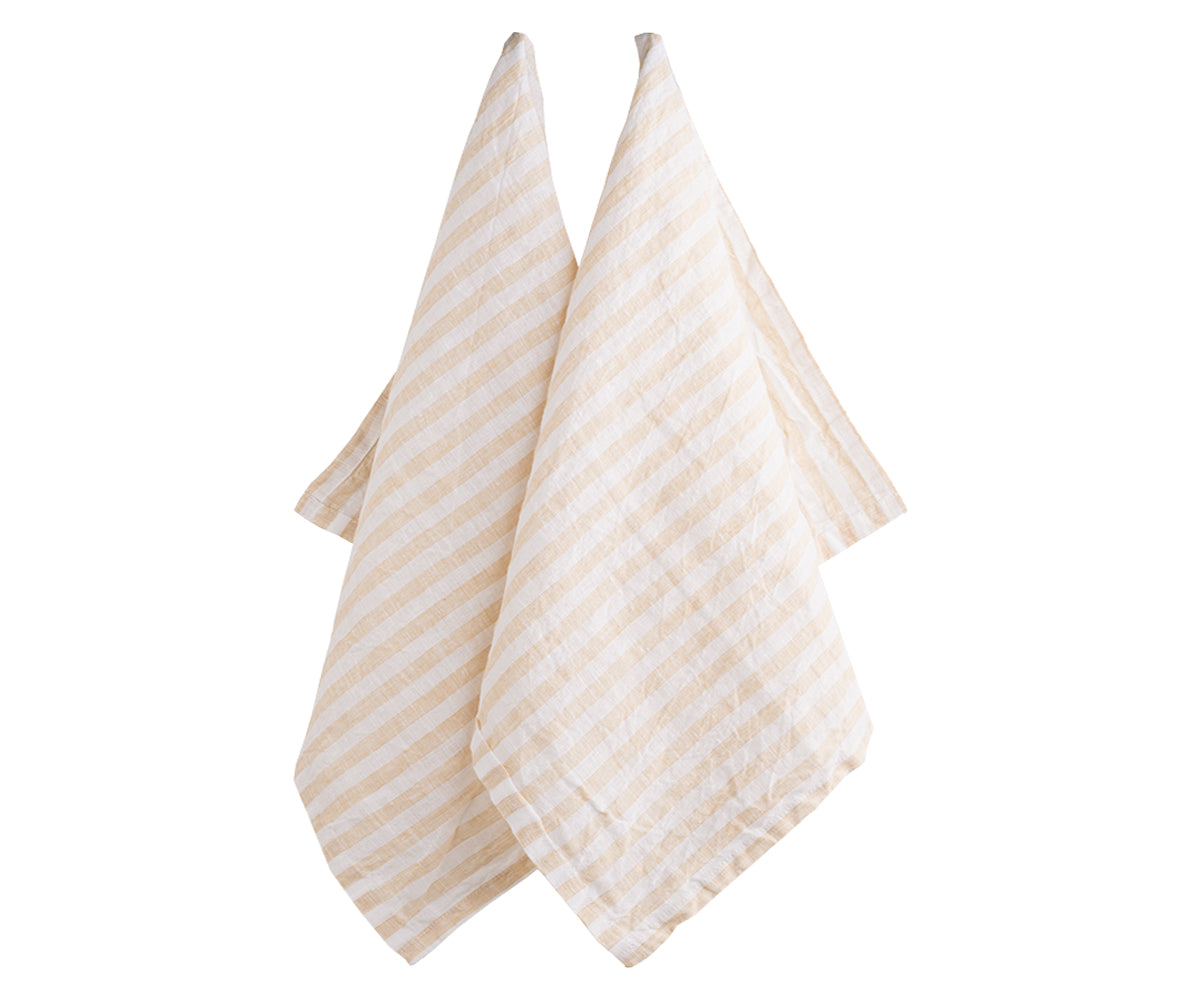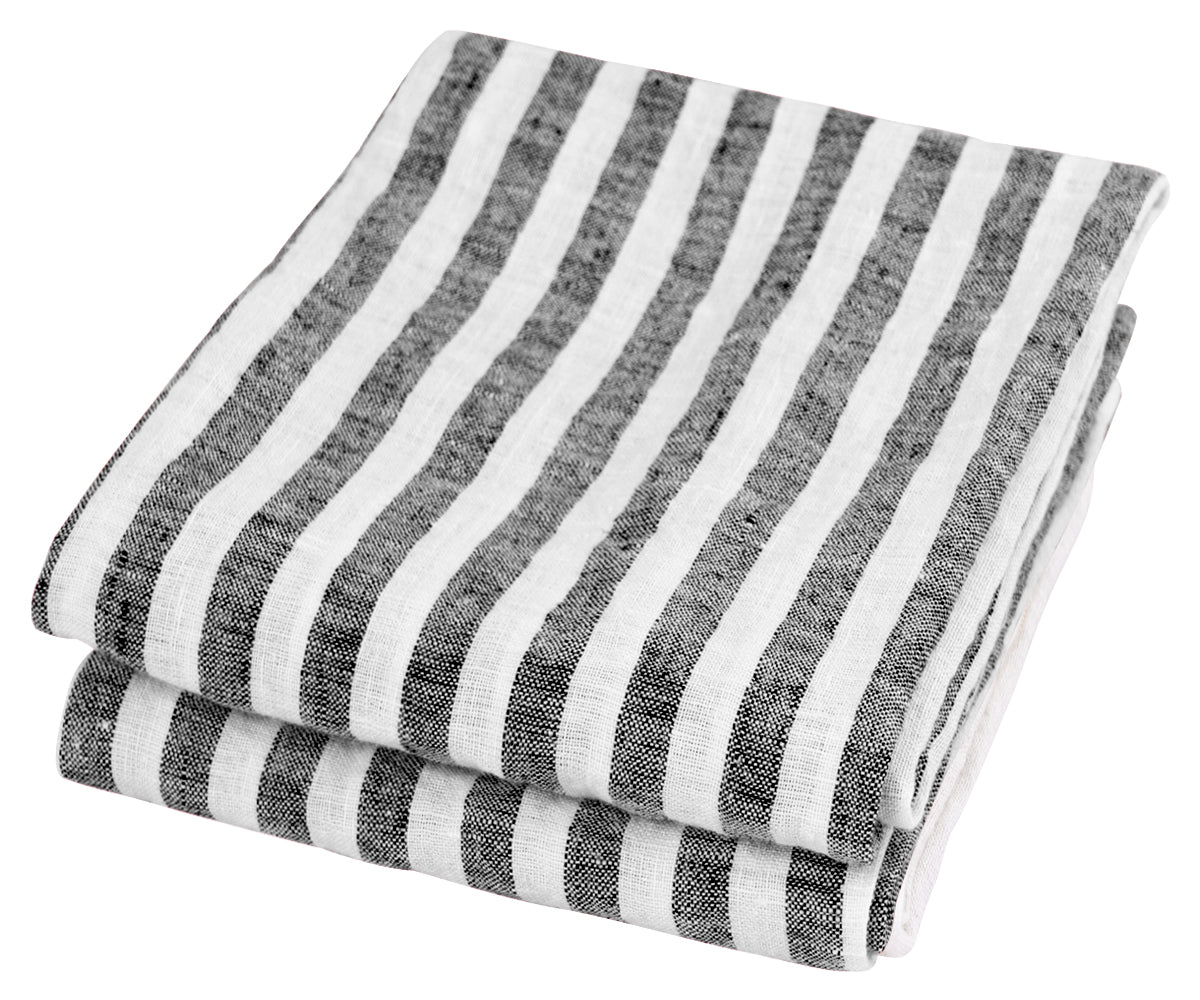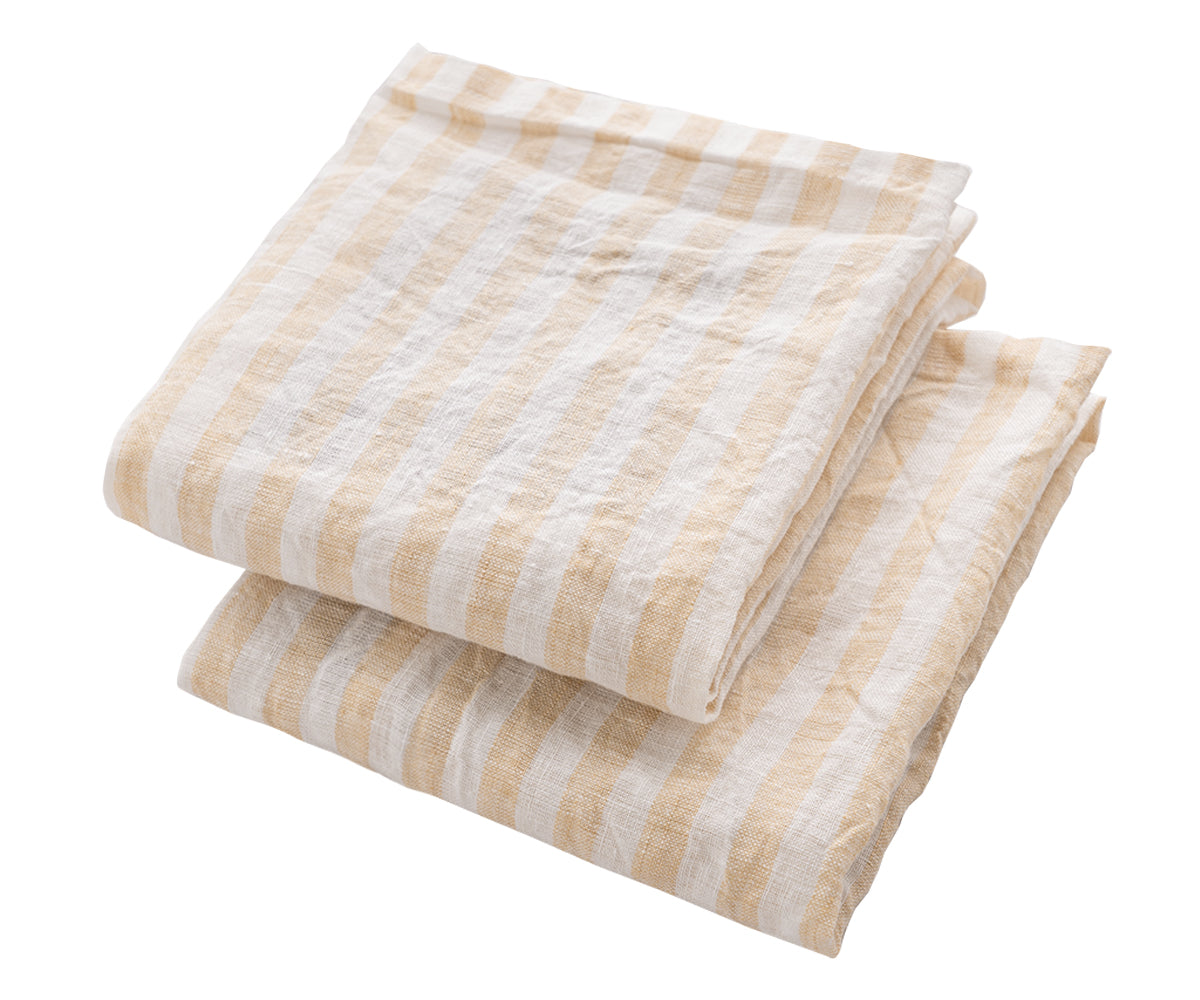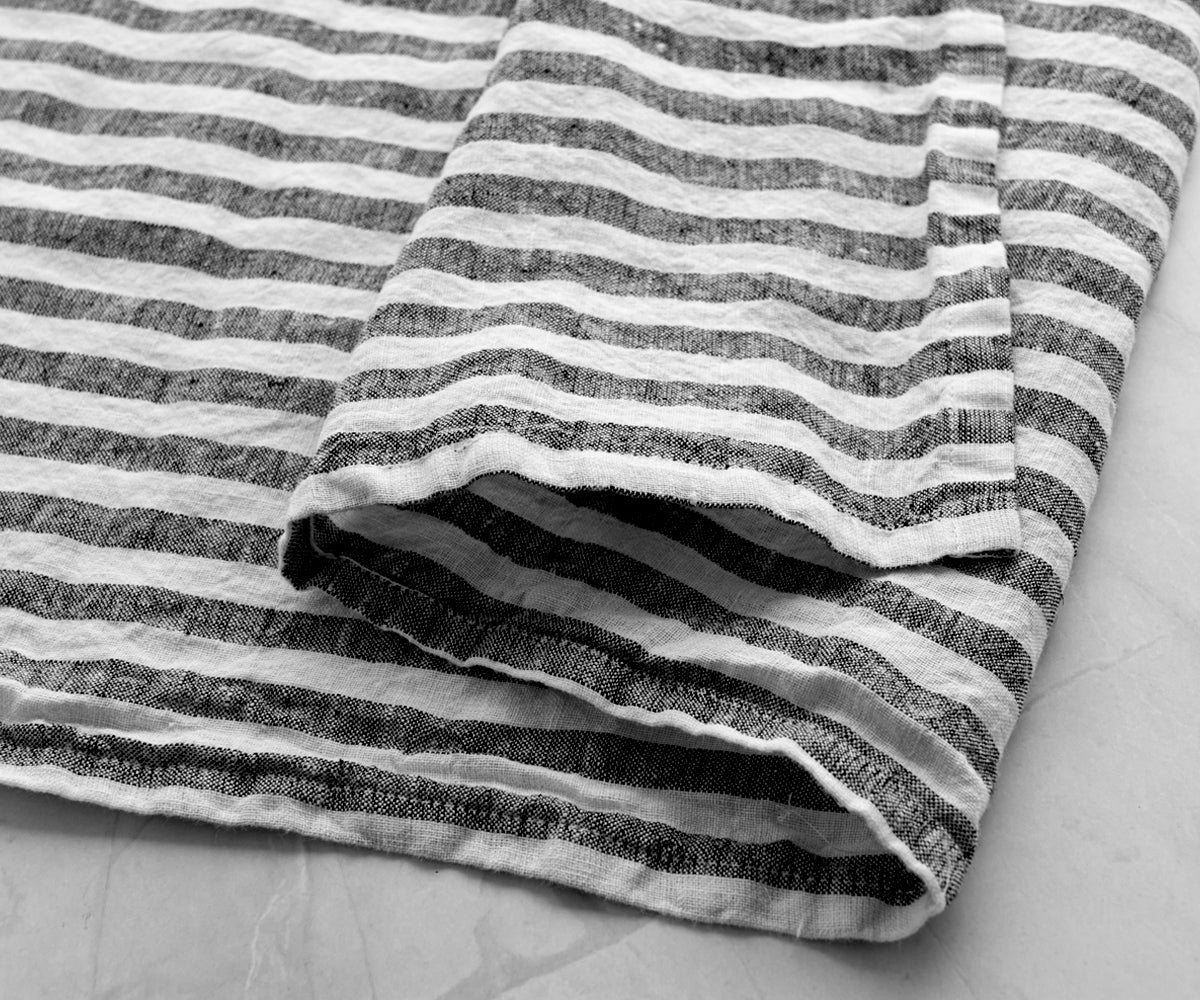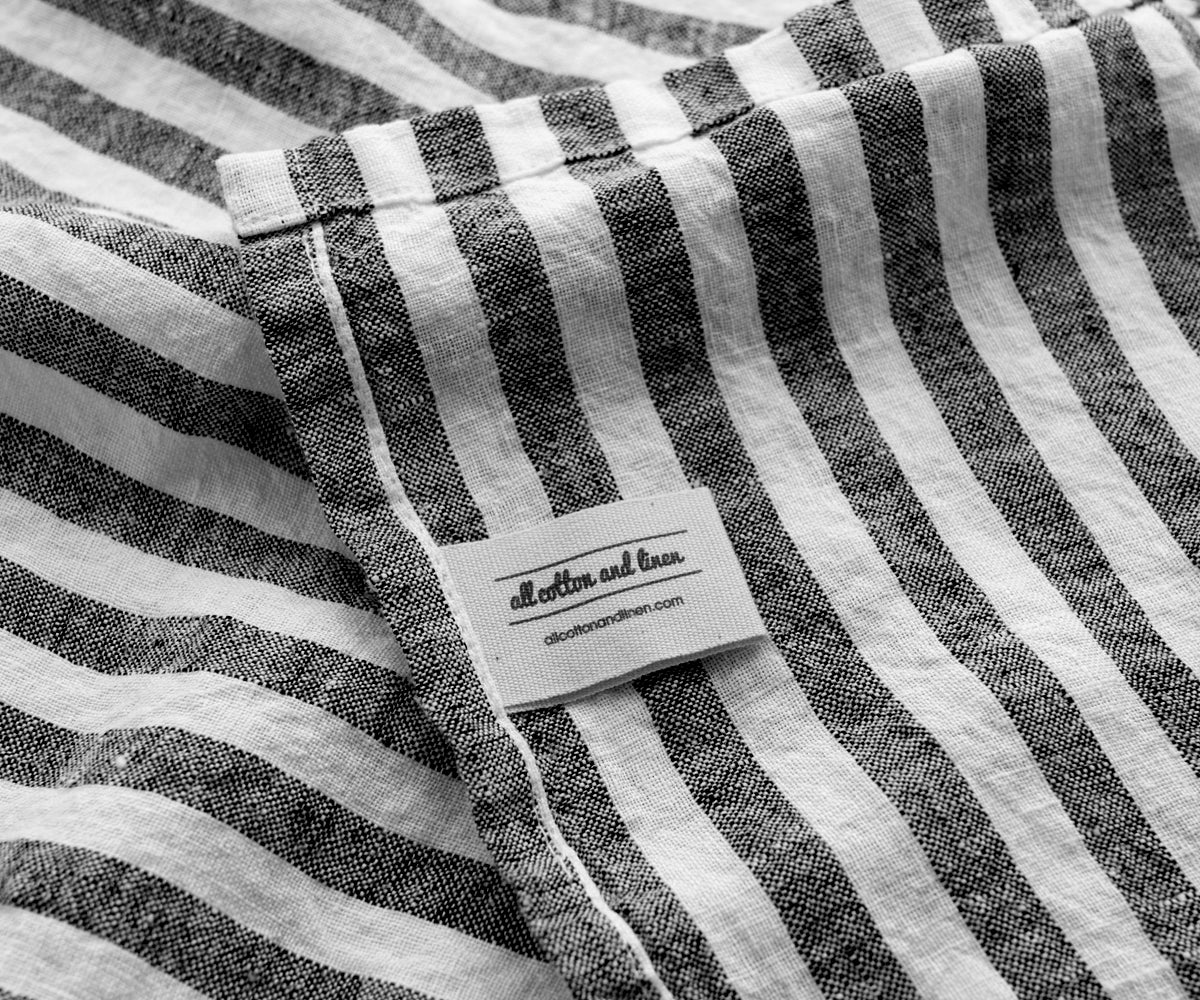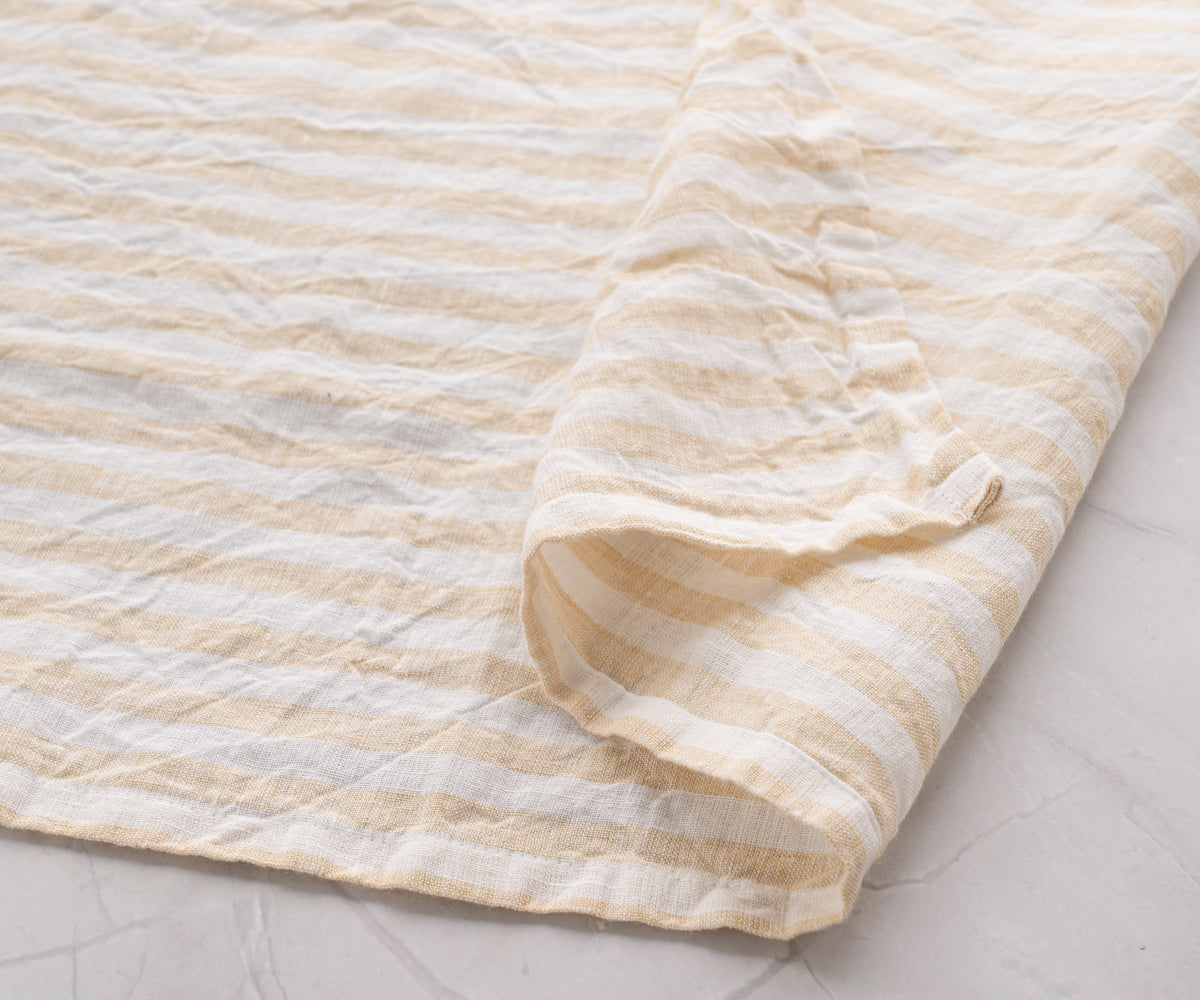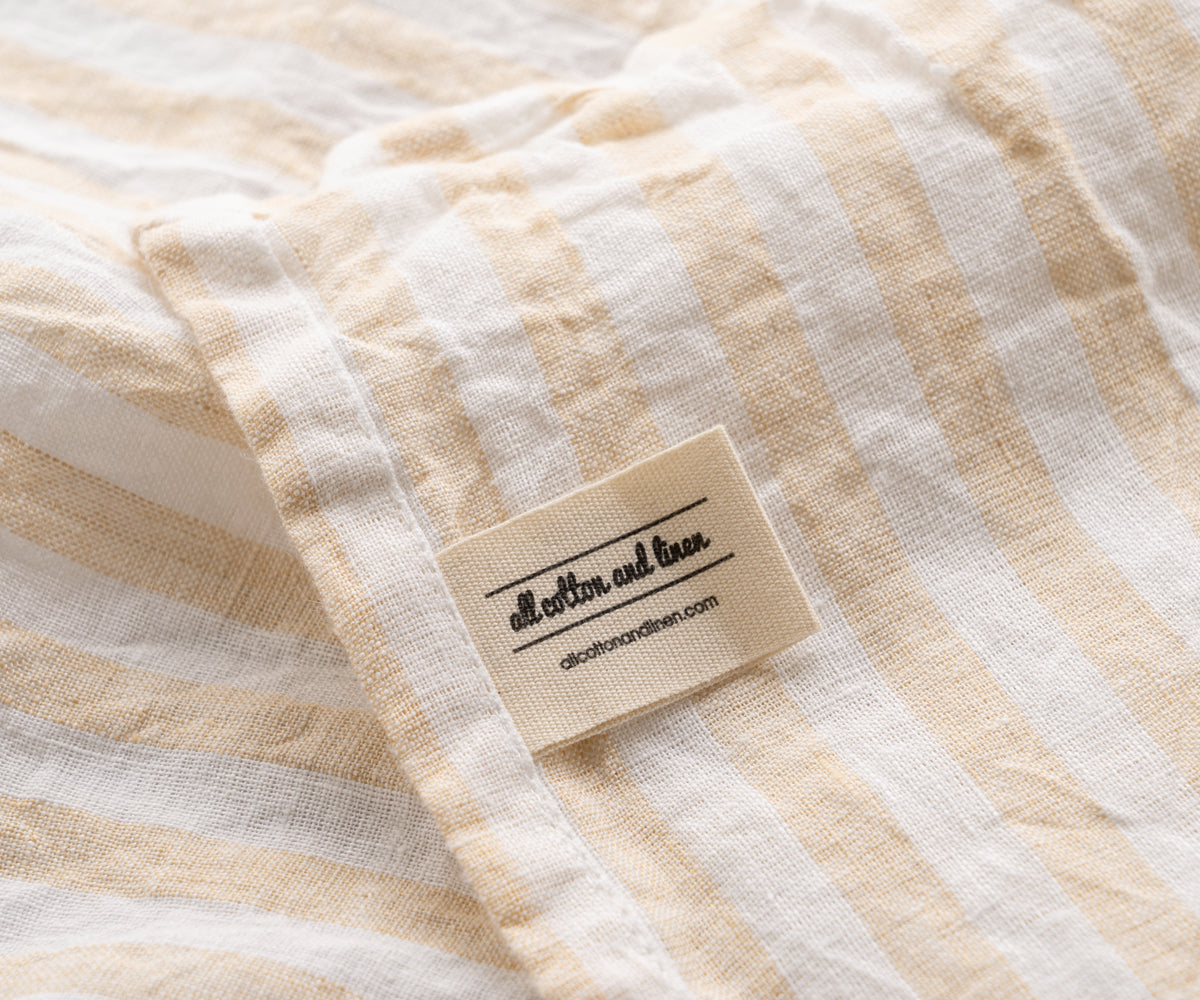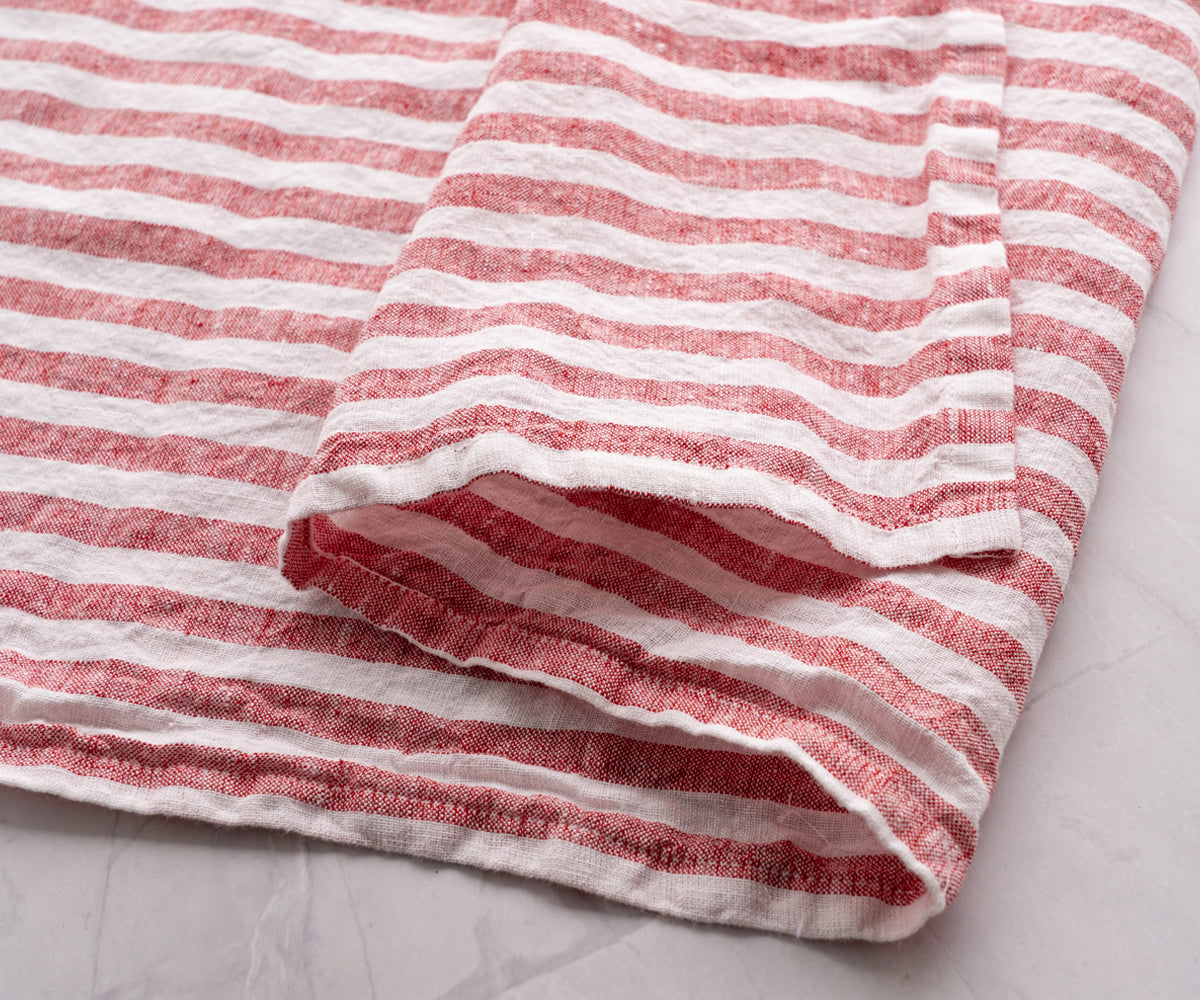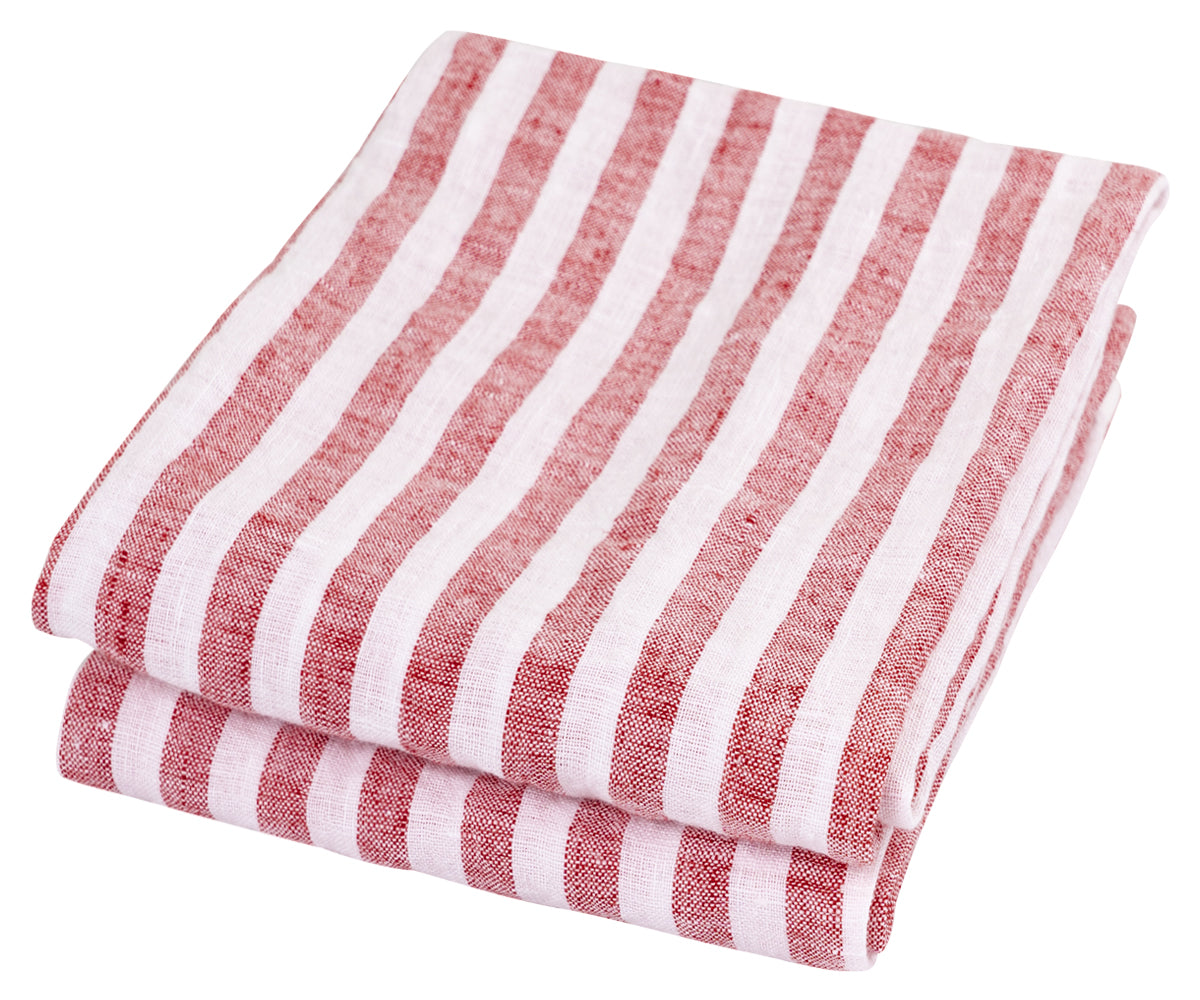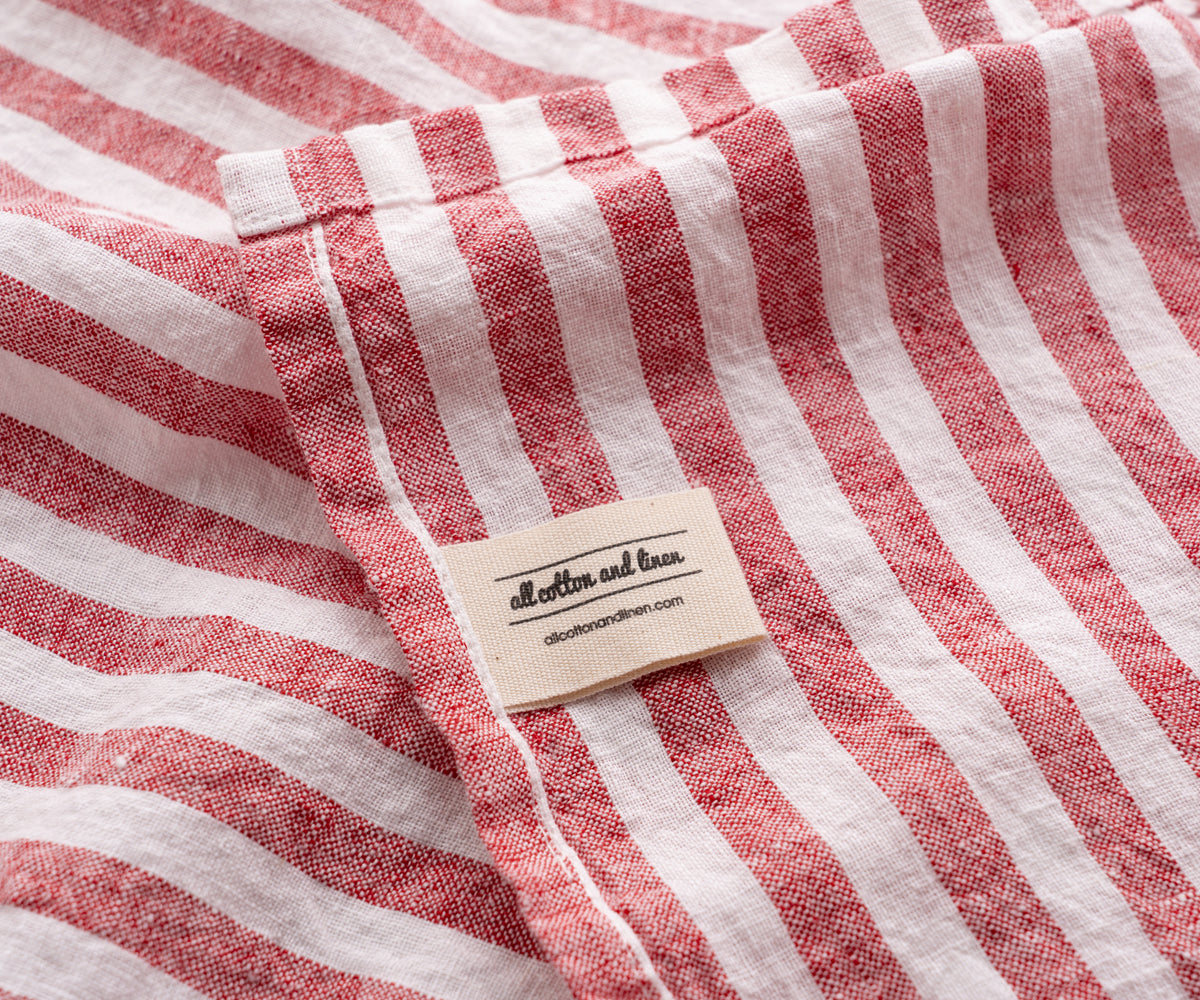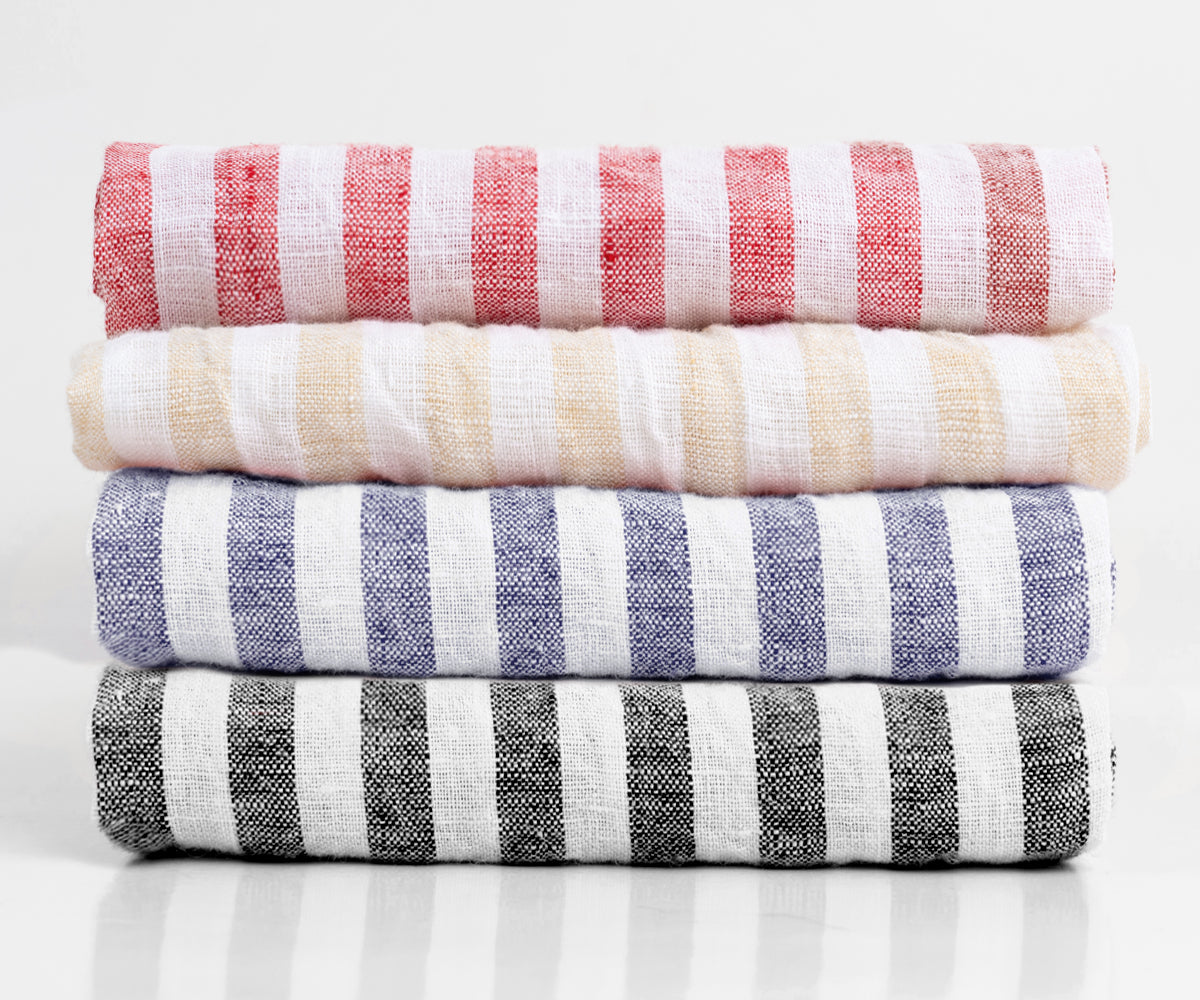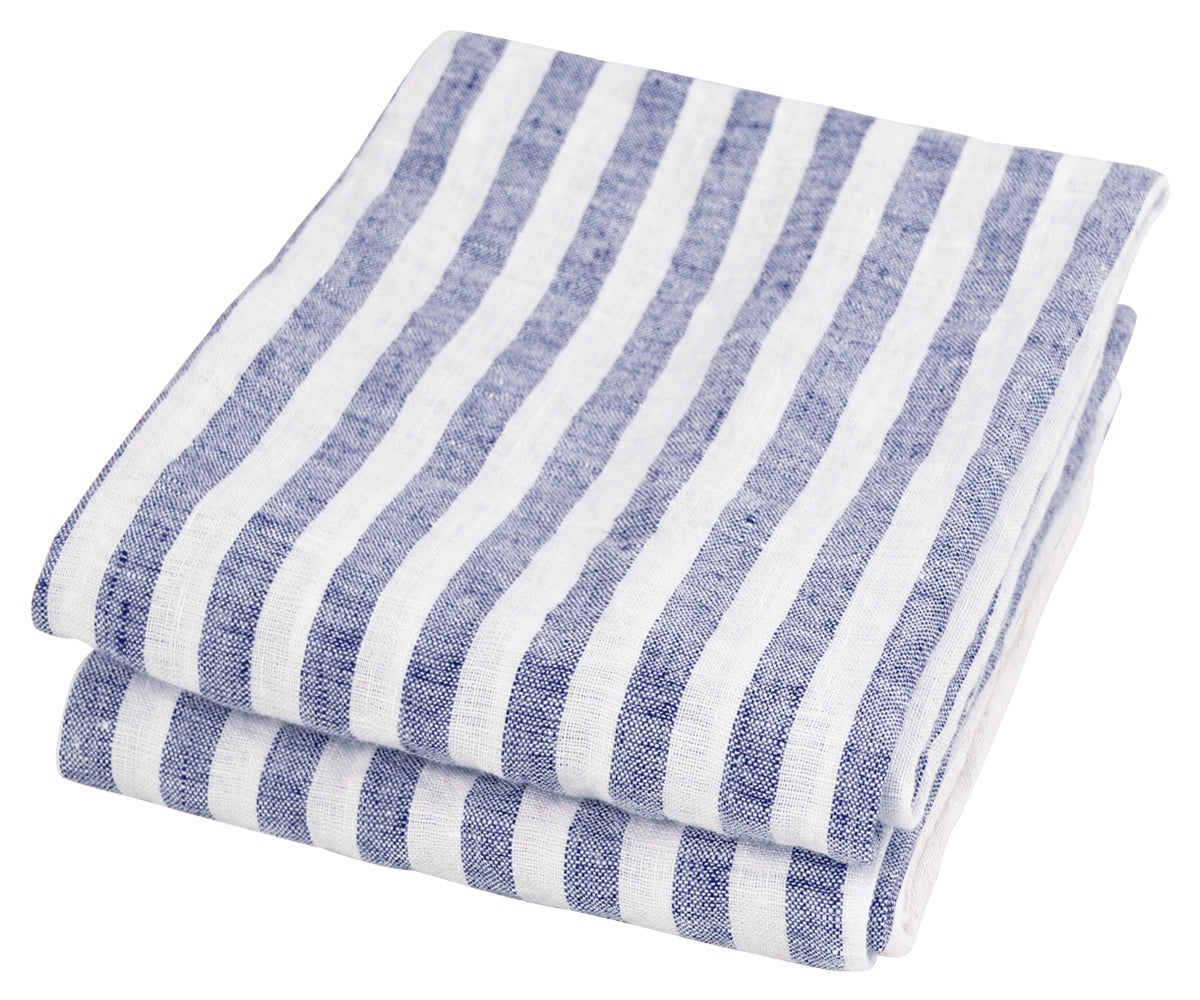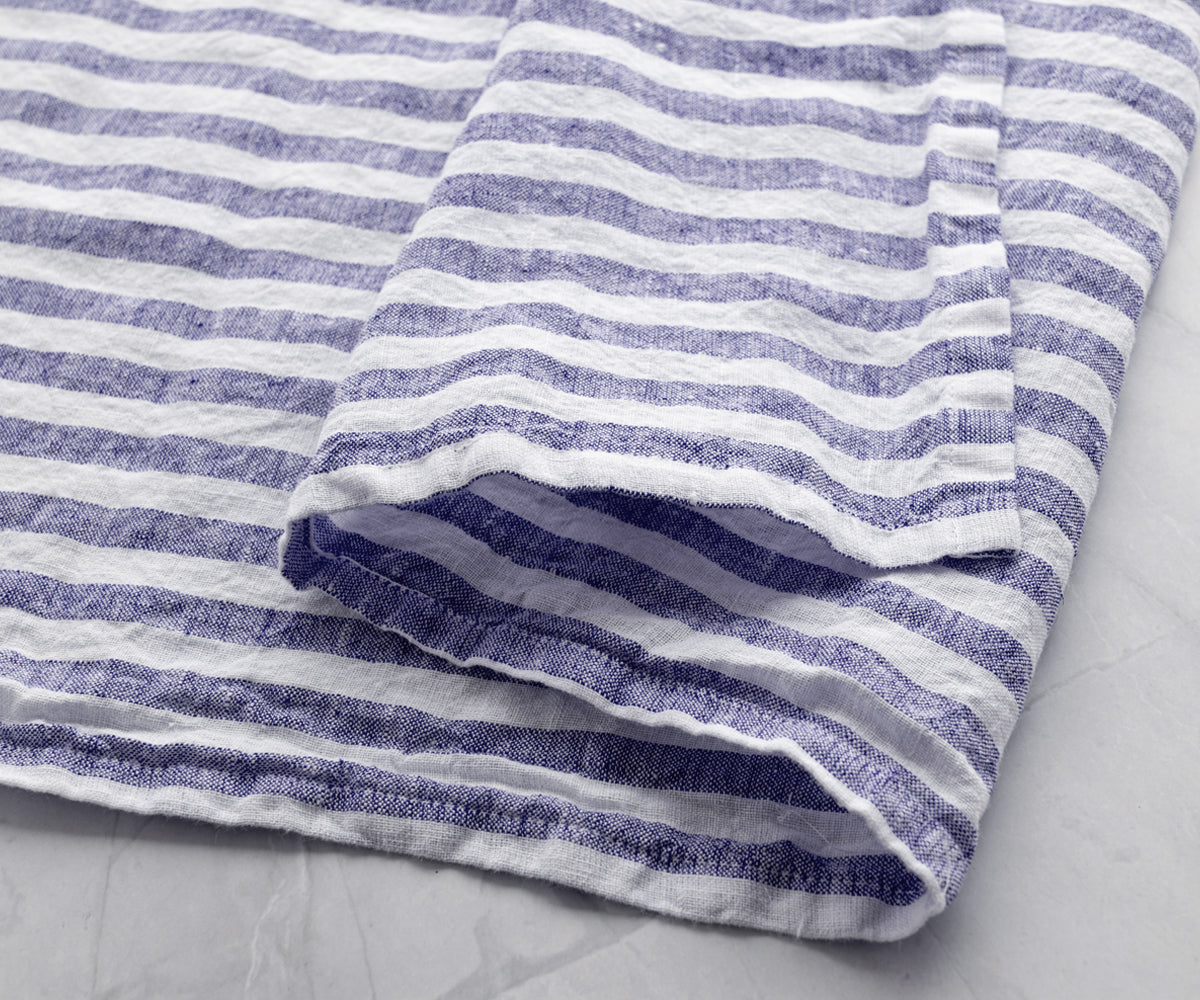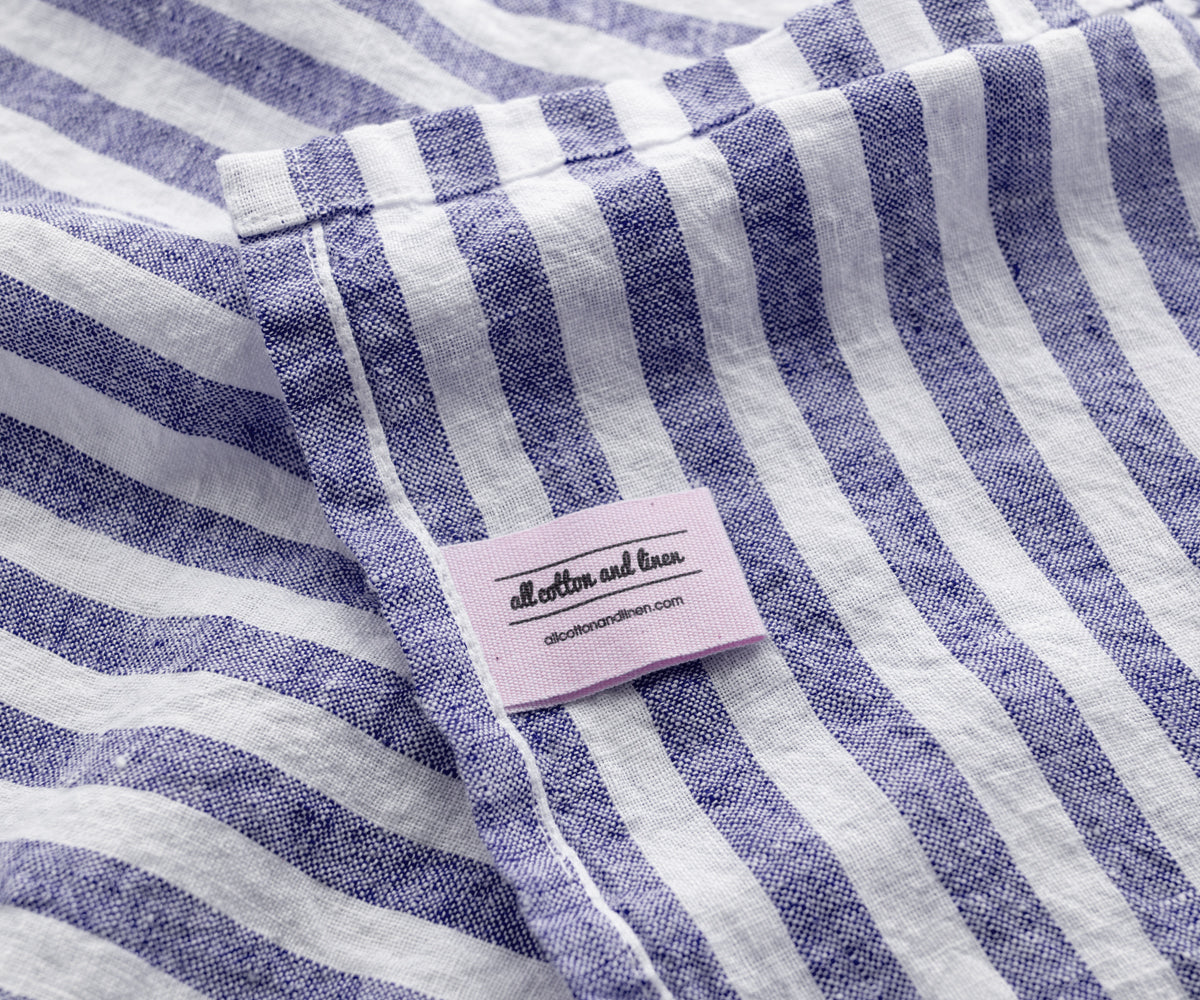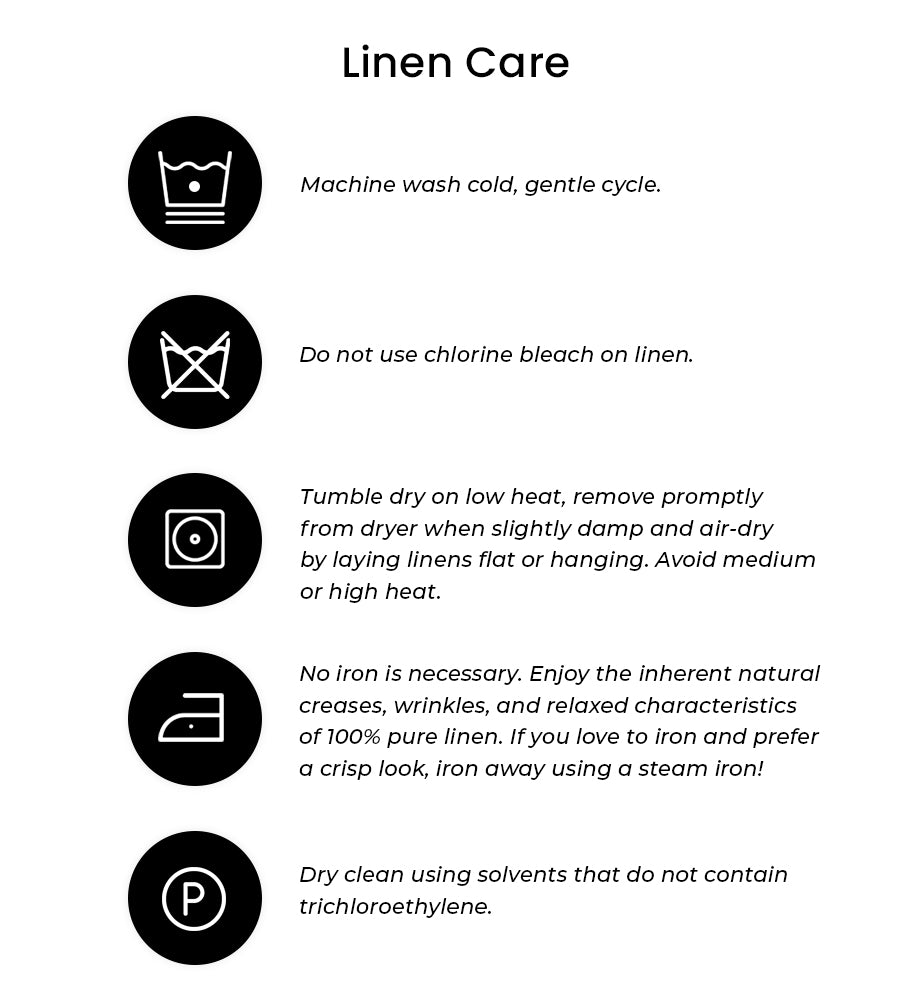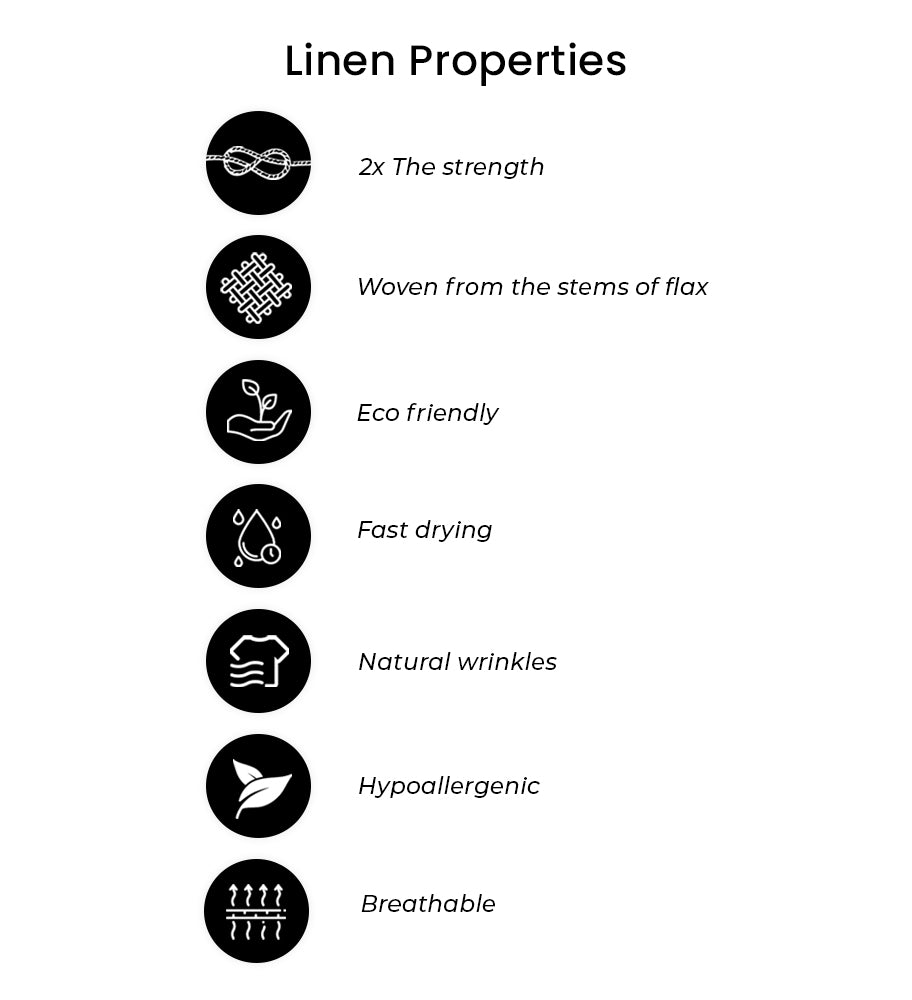
The Science Behind Coloring:
To understand why cotton and linen fabrics become yellowish over time, we must delve into some Science. Both cotton and linen are natural fibers derived from plants. Cotton comes from the fluffy bolls of the cotton plant, while linen is made from the fibers of the flax plant. Though durable and versatile, these natural fibers of linen kitchen towels and cotton textiles are not immune to the passage of time.

Oxidation and Light Exposure:
One of the primary culprits behind the yellowing process is oxidation. This occurs when oxygen molecules interact with the fibers in the fabric, leading to a chemical reaction. Over time, this reaction can change color, giving the material a yellowish tint. Think of it like a gentle aging process for fabric tablecloths, similar to how our hair might turn grey.
Light exposure is another significant factor. Just like our skin can tan or become discolored from prolonged exposure to sunlight, cotton napkins can also experience color changes when left in well-lit areas for too long. This is especially true for white and light-colored fabrics like cotton and linen, which are more susceptible to these changes.
Now that we know why our beloved fabrics, even white cotton dish towels tend to be yellow, let's explore some practical steps to prevent this natural aging process:

- Proper Storage: How you store your cotton and linen items is crucial in preserving their original color. Avoid keeping them in direct sunlight or places with excessive light exposure. Instead, opt for cool, dark storage spaces like closets or drawers.
- Air Circulation: Good airflow is essential for preventing the yellowing of linen tea towels. Avoid sealing fabrics in airtight containers for extended periods, which can trap moisture and lead to discoloration.
- Acid-Free Tissue Paper: Consider wrapping them in acid-free tissue paper when storing delicate linen napkins or cotton tablecloths. This gentle barrier helps protect against oxidation and maintains its natural color.
- Avoiding Harsh Chemicals: Opt for mild, eco-friendly detergents when laundering your cotton and linen items. Harsh chemicals can weaken the fabric fibers of cotton kitchen towels and napkins, making them more susceptible to yellowing.
- Gentle Washing and Drying: Be mindful of the washing and drying process. Use lukewarm water and choose a gentle cycle. Opt for a low heat setting or air dry if possible.
- Regular Use and Rotation: Regular and laundered fabrics are less likely to yellow. Feel free to decorate and use your favorite linen napkins for special occasions!
Takeaway:
While it's natural for cotton and linen fabrics to undergo a subtle transformation over time, you can keep white linen napkins fresh and vibrant for years to come with a bit of care and attention. By understanding the Science behind yellowing and implementing proper storage and laundering techniques, you can continue to enjoy the beauty and comfort these cherished textiles bring to your home. Follow these pristine cotton and linen textile tips to add that special touch to your dining moments every time.


